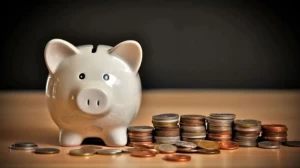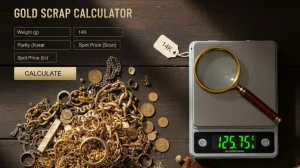
What is Forex Trading? How to Start Forex Trading?
Forex trading, short for foreign exchange, is all about converting one currency into another but what's fascinating is that the forex market is huge and bustling, with a daily trading volume of around $7.5 trillion.
Published Sep 22, 2023 | Updated Sep 22, 2023 | 📖 9 min read
On This Page
What is Forex Trading?
Forex, short for foreign exchange, refers to the process of converting one currency into another. People engage in forex trading for various reasons, including international commerce, investment, or travel. Notably, the forex market is exceptionally large and liquid, with a daily trading volume of around $7.5 trillion in 2022, according to the Bank for International Settlements.
Unlike traditional stock exchanges, forex trading occurs electronically and over the counter (OTC), which means it doesn't have a centralized physical location. Instead, traders worldwide use computer networks to buy and sell currencies. The forex market operates 24 hours a day, five days a week, covering major financial centers worldwide, such as New York, London, Tokyo, and Hong Kong. This constant activity results in dynamic price movements, making it one of the most actively traded markets globally.
How to Start Forex Trading?
To start trading forex, follow these steps:
Learn about forex: Begin by gaining a good understanding of how the forex market works. While it's not overly complicated, forex trading does require some specialized knowledge. Commit to learning the basics and understanding how currency pairs are traded.
Set up a brokerage account: You'll need a forex trading account with a reputable brokerage firm. Research different brokers, consider factors like fees, available currency pairs, and the trading platform they offer. Choose one that suits your needs and open an account.
Develop a trading strategy: Forex trading involves making decisions about when to buy or sell currency pairs. While it's not always possible to predict market movements accurately, having a trading strategy can help. Your strategy should outline your trading goals, risk tolerance, and the criteria you'll use to enter and exit trades.
Stay on top of your numbers: Once you start trading, regularly review your positions. Most trading platforms provide daily summaries of your trades. Ensure there are no pending orders that need to be filled and that you have enough funds in your account for future trades.
Cultivate emotional balance: Forex trading can be emotionally challenging, especially for beginners. It's essential to maintain discipline and emotional equilibrium. Avoid making impulsive decisions, stick to your trading plan, and be prepared to close positions when your strategy dictates.
Starting in forex trading requires knowledge, preparation, and discipline. Learning the basics, setting up an account, having a trading strategy, and managing your emotions are key steps to embark on your forex trading journey.
How Forex Trading Works?
Forex trading works as a continuous, nonstop global market where participants trade one currency for another. Unlike traditional stock exchanges, there are no physical trading floors in the forex market. Instead, it operates through a network of interconnected trading terminals and computer systems. Here's how it works:
Market Participants: The forex market involves a wide range of participants, including institutional firms, large banks, commercial banks, investment banks, and retail investors. These participants trade currencies for various reasons, such as investment, speculation, or conducting international business.
24/5 Market: Forex trading is open 24 hours a day, five days a week, due to its global nature. It begins in Asia and moves through Europe and North America as the day progresses across different time zones. This continuous trading allows for flexibility and accessibility to traders worldwide.
Currency Pairs: In forex trading, currencies are quoted in pairs, such as EUR/USD (Euro/US Dollar) or GBP/JPY (British Pound/Japanese Yen). When you trade forex, you're essentially buying one currency while simultaneously selling another.
Online Trading: With the advent of the internet, forex trading has become more accessible to individual investors. Traders can open accounts with online brokerage firms, providing them access to the forex market. These online platforms offer real-time quotes, charts, and tools for executing trades.
Leverage: Forex trading often involves the use of leverage, which allows traders to control larger positions with a smaller amount of capital. While leverage can amplify profits, it also increases the potential for losses, making risk management crucial.
Market Orders: Traders can place various types of orders, including market orders (instant execution at the current market price), limit orders (buy/sell at a specific price or better), and stop-loss orders (to limit potential losses).
Price Movements: Currency prices fluctuate based on various factors, including economic indicators, geopolitical events, interest rates, and market sentiment. Traders analyze these factors to make informed decisions about when to buy or sell currencies.
What are the Top Currencies in Forex Trading?
In forex (foreign exchange) trading, currencies play a pivotal role, with traders and investors worldwide participating in the exchange of one currency for another. The forex market, known for its continuous operation across global financial centers, is a hub of activity where currencies are bought and sold. Here, we present the top currencies that dominate the forex trading landscape, showcasing their ISO 4217 codes, symbols or abbreviations, and their respective proportions of daily trading volume as of April 2022. These currencies reflect the global economic landscape and hold significant sway in the international finance."
|
Rank |
Currency |
ISO 4217 Code |
Symbol or Abbreviation |
Proportion of Daily Volume (April 2022) |
|
1 |
U.S. dollar |
USD |
US$ |
88.5% |
|
2 |
Euro |
EUR |
€ |
30.5% |
|
3 |
Japanese yen |
JPY |
¥ / 円 |
16.7% |
|
4 |
Sterling |
GBP |
£ |
12.9% |
|
5 |
Renminbi |
CNY |
¥ / 元 |
7.0% |
|
6 |
Australian dollar |
AUD |
A$ |
6.4% |
|
7 |
Canadian dollar |
CAD |
C$ |
6.2% |
|
8 |
Swiss franc |
CHF |
CHF |
5.2% |
|
9 |
Hong Kong dollar |
HKD |
HK$ |
2.6% |
|
10 |
Singapore dollar |
SGD |
S$ |
2.4% |
|
11 |
Swedish krona |
SEK |
kr |
2.2% |
|
12 |
South Korean won |
KRW |
₩ / 원 |
1.9% |
|
13 |
Norwegian krone |
NOK |
kr |
1.7% |
|
14 |
New Zealand dollar |
NZD |
NZ$ |
1.7% |
|
15 |
Indian rupee |
INR |
₹ |
1.6% |
What are the Market Hours of Forex?
Forex, short for foreign exchange, is a global marketplace for trading currencies. It operates 24 hours a day, five days a week, thanks to the involvement of various regions worldwide. These regions include North America, Europe, Asia, and Australia, and they have their forex exchanges, which open and close at different times.
The reason forex can be traded around the clock is because of the world's different time zones. The trading day starts with Australia and Asia, followed by Europe, and then North America. As one region's markets wind down for the day, another's is just beginning or is already actively trading. This overlapping schedule keeps the forex market accessible for most of the week, except for weekends.
Forex trading hours are influenced by when each country's markets are open. While there is some overlap between sessions, the generally accepted trading times for each region are as follows:
- New York: 8 a.m. to 5 p.m. EST (1 p.m. to 10 p.m. UTC)
- Tokyo: 7 p.m. to 4 a.m. EST (12 a.m. to 9 a.m. UTC)
- Sydney: 5 p.m. to 2 a.m. EST (10 p.m. to 7 a.m. UTC)
- Europe: 3 a.m. to 12 p.m. EST (8 a.m. to 5 p.m. UTC)
The busiest and most active trading period occurs during the overlap of the European and North American sessions, particularly in the London afternoon and New York morning hours. This is when the majority of trading volume takes place.
What are the Different Ways to Trade Forex?
Forex trading offers various ways to participate, including spot, forward, and futures markets:
Spot Forex Market
This is the most common form of forex trading. It involves the direct exchange of one currency for another at the current market rate. The trade is settled with the actual exchange of currencies typically two days after the trade date, although there are exceptions. For example, the USD/CAD pair settles one day after the trade. When people refer to the FX market, they are often talking about the spot forex market.
Forward Forex Market
In this type of forex trading, two parties enter into a contract to exchange a specific amount of one currency for another on a future date at an agreed-upon exchange rate. The difference between the future rate and the current spot rate is influenced by interest rate differentials. Forward forex trading is flexible and allows users to hedge against specific risks for specific amounts and dates. For instance, a company might lock in a forward forex rate to meet a future payroll obligation.
Futures Forex Market
Forex futures contracts are traded on regulated futures exchanges. These contracts are similar to forward forex contracts but have fixed terms and trade specifications. They are typically settled in US dollars and are based on a single currency. While these markets are standardized, they do not provide the same level of flexibility as forward forex contracts, as they don't allow users to hedge against specific date risks or amounts.
Factors Influencing the Forex Market
The Forex market is influenced by various factors that can impact exchange rates. Let's break it down in simple terms:
Interest and Inflation Rates: Inflation is when the prices of goods and services go up over time. Interest rates are what banks charge for lending money. Low interest rates can lead to increased borrowing and spending, which can drive up costs. When a country's interest rates rise, its currency value tends to go up because it indicates a growing economy and efforts to control inflation.
Current Account Deficits: This is about the balance of trade between a country and its trading partners. If a country buys more than it sells, it creates a deficit. This can lead to a decrease in the country's currency value because it needs more foreign capital, reducing the demand for its currency.
Government Debt: When a country has a lot of government debt, it can deter foreign investment and result in inflation. Existing foreign investors might also sell their bonds if they see more government debt coming, leading to an oversupply of the local currency and a decrease in its value.
Terms of Trade: This is the ratio of what a country earns from exports compared to what it spends on imports. When export prices rise faster than import prices, it improves the terms of trade. This can lead to higher demand for the country's currency and an increase in its value.
Economic Performance: A stable political environment attracts foreign investment, which can increase the value of a country's currency. Stability also affects financial and trade policies, reducing uncertainty about the currency's value.
Recession: During a recession, a country's interest rates usually drop, making it harder to attract foreign capital. This can weaken the country's currency and its exchange rate.
Speculation: If investors expect a currency's value to rise, they will demand more of it to make a profit. This increased demand can raise the currency's value and exchange rate.
What is Forex Trading - FAQs
1. What is Forex Trading?
Forex trading is the exchange of one currency for another in the foreign exchange market.
2. How does Forex Trading work?
It involves buying one currency while simultaneously selling another currency, with the aim of profiting from changes in exchange rates.
3. Who participates in Forex Trading?
Participants include banks, financial institutions, corporations, governments, and individual traders.
4. When is the Forex Market open?
The Forex market operates 24 hours a day, five days a week, due to different international time zones.
5. How can I start Forex Trading?
To start, you'll need to learn about Forex, set up a brokerage account, develop a trading strategy, and manage your trades wisely.




